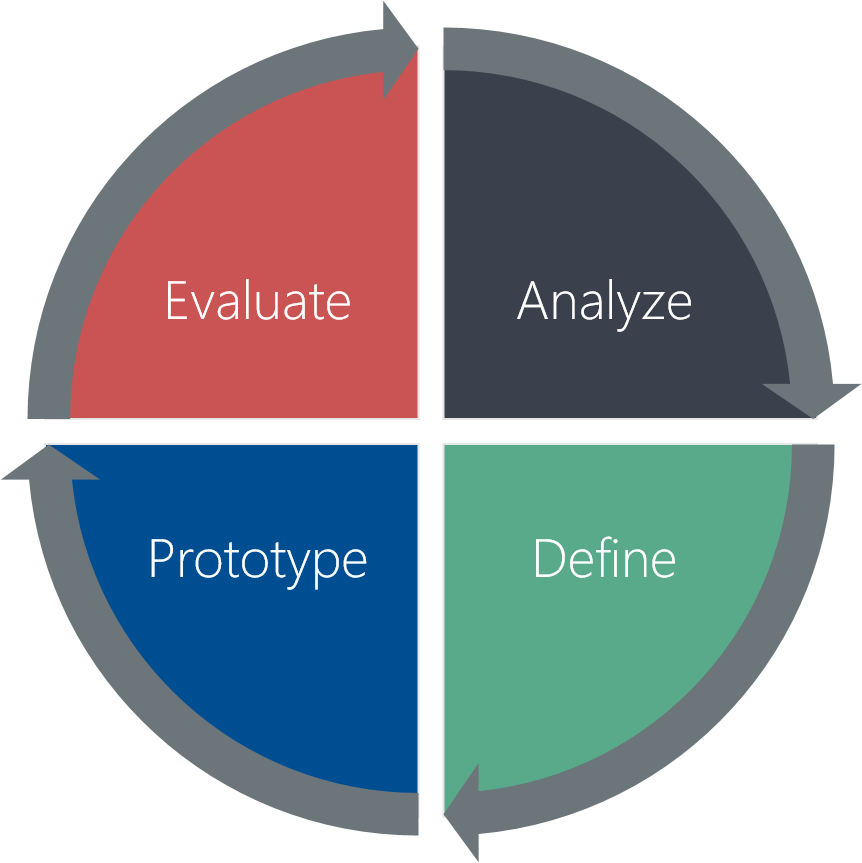xSuite Blog
Expert Knowledge on Digitalization & Automation of Business Processes

xSuite Blog
Expert Knowledge on Digitalization & Automation of Business Processes
User-Centered Design for Successful IT Projects
Topic: Software Development and Implementation | Usability and User Experience

Our modern world is subject to rapid change and requires adaptability and the potential to react quickly to new requirements in our everyday work. Our IT landscapes, on the other hand, rarely have these characteristics. We would like to shed some light on how you can give your IT projects new momentum with user-centered design, and what this means in practice.
What is user-centered design?
User-centered design is a term that finds its origin in software development. It puts the focus on the user of an application. Such a user could be anyone, even you yourself. In software development it is desirable that users, and with them their goals and work tasks, contribute to its advancement. To make this happen, they must be involved throughout the design process.
The classic user-centered design process is divided into four phases, which are run iteratively over the entire period. First, the context of use is analyzed, and data is collected on the users, their tasks, processes, and necessary tools. In the second phase, the requirements that have resulted from the first phase are defined, and in the third phase the requirements are visualized with prototypes. In the final phase, the result is evaluated against the original requirements and objectives. There should be no question today as to the importance of users in helping determine the success of IT projects and software products.
User-oriented requirement management meets project management
The question that now arises is how to combine the user-centered design process with project management. In the implementation of new IT solutions or in IT projects, requirements management is treated most unkindly. If at all, users are generally involved in the requirement specification phase far too late. This typically results in mounting costs, delays, or even project failure: Necessary features were not initially considered, the requirements implemented lacked benefit or added value—or, at the end of the whole process, the product was simply not accepted by the users. It generally all comes down to a lack of usability.
 Focusing on users in a project is a good way to avoid these kinds of negative outcomes, and to bring a project to successful completion. If users are involved at an early point, acceptance of the software tends to be higher, and functions that are ultimately necessary can be brought into the scenario. It allows needs to be met in a targeted manner.
Focusing on users in a project is a good way to avoid these kinds of negative outcomes, and to bring a project to successful completion. If users are involved at an early point, acceptance of the software tends to be higher, and functions that are ultimately necessary can be brought into the scenario. It allows needs to be met in a targeted manner.
The iterative process also enables quick reaction to changes and new requirements. Timely feedback from the users gives you the opportunity to evaluate the realization of a project, assess the suitability of the features involved, and, above all, to avoid costs that could arise due to gaps or errors in implementation.
User-centered design methods in practice
Numerous methods exist online and in technical literature for determining and evaluating requirements in the user-centered design process. Which ones are the best depends on the project and the use case. To involve your users directly, interviews or online surveys are a good choice. They enable you to identify the requirements for the software and the process, as well as any hurdles in your workflow. However, this method requires a high level of empathy on the part of the interviewer. This individual must not lose sight of the overall objective, especially if the process to be mapped is of greater complexity and many users from different areas are involved.
For complex projects it is therefore advisable to work with personas and use cases in order to structure and standardize the requirements from different perspectives. In practice, the method of context analysis or contextual inquiry is often used. The users are observed and questioned in their working environment. An example would be the introduction of software to digitize incoming mail. In such a case, you would observe the mailroom staff in their daily work, ask them about the processes and try to find out where problems originate and what makes their work easier.
Keep your eye on the goal and the users at your side
The methods involved in user-centered design do not claim to identify all conditions or requirements that we need in practice, but they are an important part of the development process. Whether developing software products or executing projects, we must always have the users at our side. Ultimately, in doing so, we serve ourselves—the users!
User Centered Design in IT project management focuses on taking user requirements into account right from the start and thus improving the usability of the solution later on. The concepts Usability and User Experience are components of this approach to increase usability. If you would like to find out more about exactly what these terms mean and what the practical implementation in a workflow solution for incoming invoice processing can look like, I recommend our whitepaper. You can download it here.
Topic
- AP Automation (28)
- Digitalization (28)
- SAP (18)
- Cloud (15)
- S/4HANA (10)
- E-Invoicing (9)
- Skills Shortage (6)
- Supplier Portal (6)
- AI and Machine Learning (5)
- Procurement (5)
- Invoice (5)
- GDPR (4)
- Software Development and Implementation (4)
- xSuite Group (4)
- Archiving (3)
- Usability and User Experience (3)
- RPA (2)
- Dynamic Discounting (1)
- Blockchain (1)
- Incoming Mail (1)


